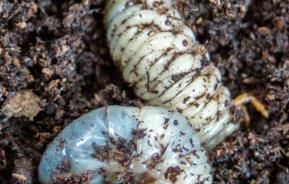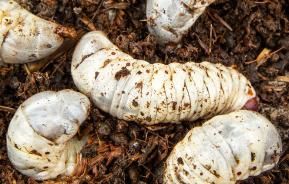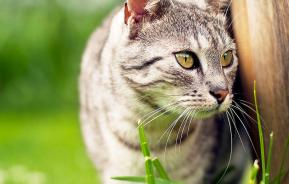Foxes are now common visitors to both rural and urban gardens, where they scavenge for food. They are more of a nuisance than anything else, knocking over bins, but they will trample on plants and dig holes in the ground, in their search for food.
Description
Our fox is the European red fox and it has a very varied diet. This includes discarded human food, birds, small mammals, fruit and even earthworms and chafer grubs.
Luckily, foxes mainly live solitary lives, except during the breeding season, so you are unlikely to have more than one visit you on a regular basis.
Symptoms
Being large animals, foxes will damage low-growing plants by trampling them. They will scavenge for anything they think could be food. This includes fruit and bulbs.
They dig around in the soil looking for insects, often digging up plants in the process. They are also attracted to the smell of organic plant feeds, such as bonemeal, dried blood and chicken pellets and will dig wherever these have been used.
They will dig large holes in the lawn, looking for grubs, such as leatherjackets and chafer grubs.
Male foxes use their excrement and strong-smelling urine as territory markers, and often leave their excrement in prominent places.
They will chew through anything plastic, including hosepipes.
Treatment and control
Sadly, once a fox, or foxes, start visiting a garden, it is more-or-less impossible to keep them out. Most fences are unlikely to provide an effective deterrent, as foxes can climb over or dig underneath them. In which case, their presence may have to be tolerated.
Animal repellents and electronic scaring devices are unlikely to be effective for long – foxes soon get used to them.
Organic plant foods, especially bonemeal, chicken manure pellets and dried blood, should be replaced with other feeds.
Treat lawns to control leatherjackets and chafer grubs.








